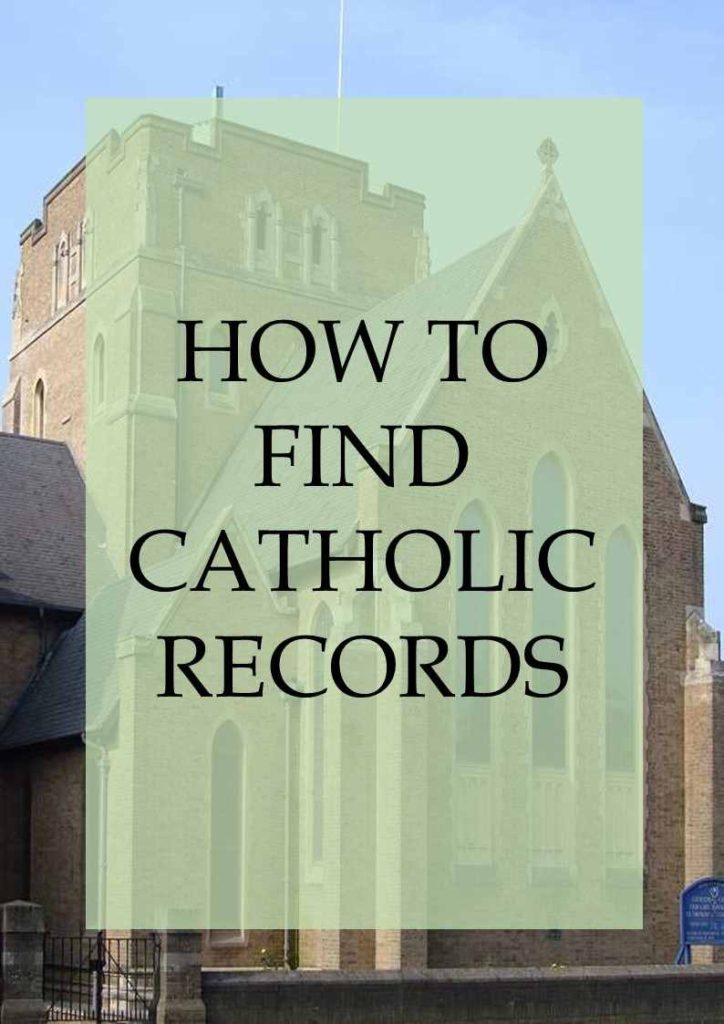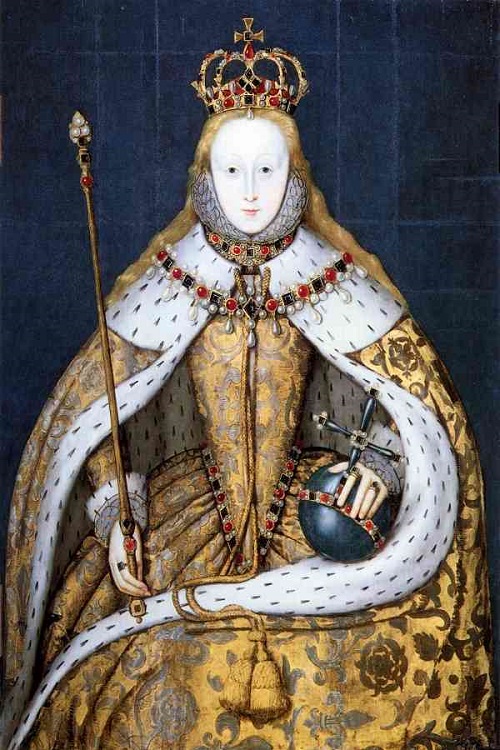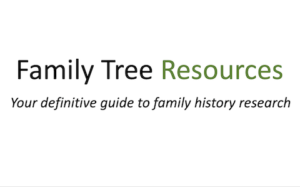
In 1559 Elizabeth I, completing the process begun by Henry VIII, removed all influence from the Roman Catholic Church. This was because she wanted to secure her own position and it was therefore made illegal to celebrate Catholic Mass in England and Wales.
Act of Uniformity 1559 and Recusancy
Under the terms of the 1559 Act of Uniformity, Catholics were fined 12d if they did not attend Church of England Services, and the celebration of Catholic mass was banned. People refusing to attend the Church of England services were called recusants. Any such fines were normally collected by churchwardens and as such, do not usually appear in records of the central government.
Recusancy became an indictable offence after 1581 and fines were increased to twenty pounds per month, and levied by sheriffs of each county on behalf of the exchequer. These fines were recorded in pipe rolls. After 1592 until 1691, recusant rolls were kept, and these rolls, along with the pipe rolls, can be viewed at the National Archives.

A record of any such prosecution could have been mentioned in quarter sessions. The prosecution may also have been mentioned in a newspaper, so it is worth checking newspapers in your local library or record office.
Due to the stipulations laid down by the Act of Uniformity, the number of Catholics decreased and continued to be low from the 17th century to the 19th.
Oath of Allegiance
Following the failure of the Gunpowder plot in 1605, James I introduced the Oath of Allegiance whereby Catholics had to deny the Pope’s authority and swear allegiance to the monarch.
If any Catholics refused to do this, they could be imprisoned. If any recusant refused to receive annual Anglican communion, they could have their property seized or be fined.
Many records of land seizures and fines are kept in the National Archives, with the majority of records being from the 16th and 17th centuries. The Catholics were not persecuted in the same way in the 18th century, but they were still not permitted to inherit land, hold civil or military office or enter the professions.
Any man wishing to hold public office had to swear an oath of allegiance to the Sovereign because he or she was considered to be the head of the Church. Catholics did not accept that the monarch was the head of the Church, so were not considered to be subjects.
Roman Catholics’ Emigration
Some Catholics decided to move abroad to escape persecution, and young women sometimes became Nuns in France and the Netherlands.
English, Welsh and Irish Catholics were still able to be educated in their faith as Schools were established by these orders.
Many of these institutions returned to England in the 1790’s and still survive today.
Catholic Relief Acts
The Catholic Relief Act, also known as the Papists Act, came into force in 1778. Following the establishment of this Act, Catholics were allowed to join the army and could purchase land if they were prepared to swear allegiance to the monarch as the head of the church.
The Catholic Relief Act of 1791 allowed Catholics to worship and permitted Catholics to live in London, to have their own schools and to hold junior public office roles.
Increase in Numbers of Catholics
Men trained as priests on the continent before returning to England in an attempt to reconvert England back to Catholicism.
In the late 18th century, more catholic chapels were built, and following the Catholic Relief Act of 1791, more catholic registers began to be kept, but many registers still only began in the 19th century. Many early records were kept on loose sheets of paper or notebooks so that they could be hidden if required.
The number of Catholics increased substantially in Britain in the late 18th century because of people fleeing the French Revolution, and the forming of the United Kingdom of Great Britain and Ireland in 1801, which merged Great Britain with the Kingdom of Ireland.
Although the majority of the Irish population was catholic, they were not permitted to become Members of Parliament.
Catholicism’s Surge in Popularity During The 19th Century
During the 19th Century, there was a surge in popularity for Catholicism because the Anti-Catholic legislation had been repealed in 1829 due to the Roman Catholic Relief Act 1829. This Act meant that Catholics held equal civil rights allowing them to vote and hold most public offices. It also permitted Catholics to become Members of Parliament.
Catholicism also became and also because of the mass Irish migration in the 1840’s, partly because of the Irish Potato Famine that began in 1845 and lasted for the next six years.
Catholic cemeteries were established in the 19th century.
The population of Liverpool temporarily doubled in 1847 to 592,000 due to Irish migration. There were around 80,000 Irish living in Liverpool as shown by the 1841 Census, but by the time of the 1851 Census, that figure had grown to 84,000.
How to Trace Catholic Ancestors
Incomplete Records
If you wish to trace your Catholic ancestors, you may find it difficult as records from this period are fragmentary and incomplete. Your ancestors may have worshipped in Anglican Churches, but many did not want to worship in an Anglican Church, or were not allowed to.
Few catholic registers from ceremonies were kept because of the concern about them being discovered. It was not uncommon for private homes to become unofficial chapels.
When the Registrar General wished to collect non-parochial registers in 1837 and 1857, many catholic registers that had been kept were not given up because they contained marriages deemed to be illegal because they took place during the period 1754-1837. Under the terms of Hardwicke’s Marriage Act 1753, a marriage was only deemed legal if it had taken place in the Church of England.
Catholic registers in the National Archives
Some catholic registers are kept in series RG4 in the National Archives, the majority of these records coming from:
| Catholic registers in the National Archives |
|---|
| Cumberland |
| Dorset |
| Durham |
| Hampshire |
| Lancashire |
| Lincolnshire |
| Northumberland |
| Nottinghamshire |
| Oxfordshire |
| Warwickshire |
| Westmoreland |
| Yorkshire |
Catholics May Appear in Anglican Parish Registers
Because some Catholics may have been baptised, married and buried in Anglican Churches, they will appear in Parish Registers. The priest entered the word papist or recusant by the entry in the register. Catholics were often buried in the parish churchyard.
Between 1754-1837, a marriage had to be conducted in the Church of England to be considered valid, so many catholic marriages during this period can be found in Anglican Church Registers.
You may also find that Catholics were buried in the parish church because that may have been the only place in which a burial could take place.
A clergyman had to make a record of recusants who refused to attend services, so catholics may appear in the parish records, but not in the registers of baptisms, marriages or burials.
Catholic Priests Conducted Secret Ceremonies
Many Catholic priests conducted baptism or marriage ceremonies in secret. Although registers of Catholic baptisms and marriages had to be kept from 1563, by orders from the Catholic Church, very few of these registers have survived. Priests were concerned that had they kept registers, they may have fallen into the wrong hands.
Catholic Registers Lost Because Priests Kept Them With Personal Papers
Some registers have been lost because priests kept them with their personal papers, which may have been lost over the years.
Catholic Marriage Index
A Catholic Marriage Index containing records of marriages from 1837-1880 is available at the Institute of Heraldic and Genealogical Studies (IHGS).
Catholic Parish Records
Catholic parish registers are still mainly kept by parish priests but some have been indexed by the Catholic Record Society. If you wish to consult these transcripts, the majority of them can be consulted in the Catholic National Library.
Some catholic registers have been digitised and those from the Diocese of Liverpool can be consulted at Ancestry and those from the Dioceses of Birmingham, Liverpool, Middlesbrough, Southwark and Westminster can be consulted at FindmyPast. Please note a subscription is required to access the records at these two sites.
During the 18th century and early 19th, entries in a catholic baptism register normally include birth and baptism dates, parents and godparents names. Latter registers, however, also often include the mother’s maiden name. Some catholic registers were written in Latin.
Catholic Taxation Records
In 1625, Catholics had to pay double the tax of their Protestant neighbours. These taxation records can be found in Lay Subsidy Rolls.
In 1692, Catholics had to pay double land tax, making Catholics easy to distinguish from other tax payers because they were paying double the rate.
Estreats Rolls
Following the invention of the Popish Plot by Titus Oates, in which he alleged that the Catholics were plotting to assassinate King Charles II and install the Duke of York on the throne, fines were imposed on Catholics.
These rolls contain details of the name of the recusant, their parish, rank or occupation, and the fine that was levied, and can be consulted at the National Archives.
Outcome of the Jacobite Rebellion on Catholics
Following the Jacobite Rebellion of 1715, Catholics who refused to swear an oath of loyalty had to register their names and estates at quarter sessions or their property could be seized. Estates are portrayed in detail, these details including the size and location of the land.
If any estate was seized, the close rolls, maintained by The Forfeited Estates Commission, can be consulted at the National Archives.
